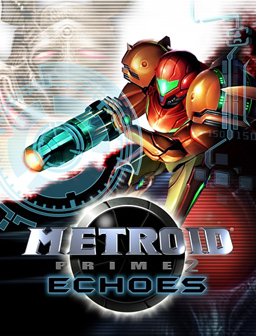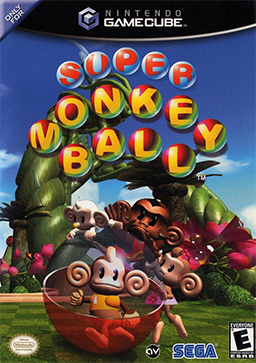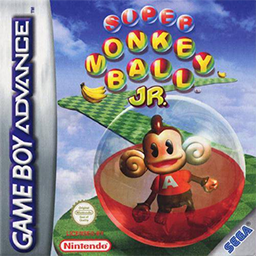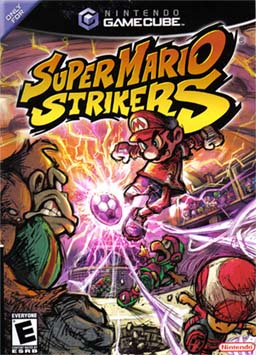
Mario Tennis is a 2000 sports video game developed by Camelot Software Planning and published by Nintendo for the Nintendo 64 (N64). Following Mario's Tennis, it is the second game in the Mario Tennis series. The game is known for being the introduction of Luigi's arch-rival, Waluigi, and the re-introduction of Princess Daisy and Birdo.

Mario Golf: Toadstool Tour, known in Japan as Mario Golf: Family Tour, is a 2003 sports game developed by Camelot Software Planning and published by Nintendo for the GameCube. It is the sequel to the 1999 Nintendo 64 title Mario Golf, and is the third game in the Mario Golf series. It was released in North America on July 28, 2003, in Japan on September 5, 2003, and in PAL regions in 2004.

Mario Party is a party video game series featuring characters from the Mario franchise in which up to four local players or computer-controlled characters compete in a board game interspersed with minigames. The games are currently developed by Nintendo Cube and published by Nintendo, being previously developed by Hudson Soft. The series is known for its party game elements, including the often unpredictable multiplayer modes that allow play with up to four, and sometimes eight, human players or CPUs.

Metroid Prime 2: Echoes is a 2004 adventure game developed by Retro Studios and published by Nintendo for the GameCube. The sequel to Metroid Prime (2002) and the first Metroid game with a multiplayer feature, Echoes was released in North America, Europe and Australia in 2004 and in Japan under the name Metroid Prime 2: Dark Echoes in May 2005.

F-Zero GX is a 2003 racing video game developed by Amusement Vision and published by Nintendo for the GameCube console. It runs on an enhanced version of the engine used in Super Monkey Ball. F-Zero AX, the arcade counterpart of GX, uses the Triforce arcade system board conceived from a business alliance between Nintendo, Namco and Sega. Published by Sega, it was released alongside GX in 2003.

Super Monkey Ball is a 2001 platform party video game developed by Amusement Vision and published by Sega. The game debuted in Japan at the 2001 Amusement Operators Union trade show as Monkey Ball, an arcade cabinet running on Sega's NAOMI hardware and controlled with a distinctive banana-shaped analog stick. Due to the discontinuation of Sega's Dreamcast home console and the company's subsequent restructuring, an enhanced port dubbed Super Monkey Ball was released as a launch title for the GameCube in late 2001, garnering interest as Sega's first game published for a Nintendo home console.

TimeSplitters 2 is a first-person shooter video game, developed by Free Radical Design, published by Eidos Interactive, and released in October 2002 for PlayStation 2, Xbox and GameCube. The game's story focuses on the efforts of a space marine who seeks to recover powerful time crystals from a race of alien mutants called TimeSplitters, which leads them to taking on the form of an individual dealing with their own problems across different time periods between the 19th and 25th century. The developers focused on expanding the story element following 2000's TimeSplitters, and features influences from various film genres, including horror, action and science fiction.

Mario Power Tennis is a 2004 sports game developed by Camelot Software Planning and published by Nintendo for the GameCube. The game is the sequel to the Nintendo 64 title Mario Tennis, and is the fourth game in the Mario Tennis series. The game was ported for the Wii in 2009 as part of the New Play Control! series, and was also re-released as a Nintendo Selects title in 2012. A companion handheld game, Mario Tennis: Power Tour, was also released on Game Boy Advance around the same time as the original GameCube release, bearing the same title as Power Tennis in Europe.

Super Monkey Ball Jr. is a platform game, part of the Super Monkey Ball series, developed by Realism and Creations for the Game Boy Advance. It is one of the few games on the system to make use of its 3D graphics capabilities. It is generally seen as a port of the first game in the Super Monkey Ball series, as it reuses many levels from it, but has a few differences.

Super Mario Strikers, known in Europe and Australia as Mario Smash Football, is a 2005 sports video game developed by Next Level Games and published by Nintendo for the GameCube. The game's developers had worked on NHL Hitz Pro before development of Strikers, which served as an influence for the fast-paced and physical nature of the game. This was also the last Mario game to be released on the GameCube in Japan and North America.

Bomberman Jetters is an action game for the Game Boy Advance, GameCube and PlayStation 2, and part of Hudson Soft's Bomberman series. The game builds on the gameplay style established in the previous Bomberman series entry, 2002's Bomberman Generation, and features characters and settings from the 2002 anime series Bomberman Jetters. The GameCube version utilizes cel-shaded graphics similar to those of Bomberman Generation, while the PlayStation 2 version does not.

Beach Spikers is a beach volleyball video game released in Japanese arcades in 2001. The game was developed in-house by Sega AM2 and published by Sega. A GameCube port, renamed Beach Spikers: Virtua Beach Volleyball, was released in 2002 for all regions.

Super Monkey Ball: Touch & Roll is a party video game for the Nintendo DS, part of the Super Monkey Ball series. It uses the DS's touch screen as the primary controller for maneuvering the monkey around the level, although D-pad control is also supported.

Super Monkey Ball Adventure is a platform video game developed by Traveller's Tales and published by Sega. Part of the Super Monkey Ball series, it was released on 2006 for the PlayStation 2, PlayStation Portable and GameCube.

Super Monkey Ball: Banana Blitz is a platform game developed and published by Sega, the seventh title in the Super Monkey Ball series, following Super Monkey Ball Adventure. It was released as a launch title for the Wii system on November 19, 2006, in North America, December 7 in Australia and December 8 in Europe.

Super Monkey Ball Deluxe is a platform video game developed by Tose and published by Sega. It was released for the PlayStation 2 and Xbox in 2005. The game compiles all stages from Super Monkey Ball and Super Monkey Ball 2, as well as adding original levels.

Swingerz Golf is a sports video game released by Telenet Japan in 2002. It is a golf simulation game that allows the player to choose from 14 different characters, each with different strengths and weaknesses, to play on any of the game's 6 courses, varying greatly in difficulty and atmosphere. Along with normal match and stroke modes of play, the game offers a tour mode, which simulates the career of a chosen character, a mission mode, consisting of a series of challenges that gradually increase in difficulty, and minigames, including a sudden death style of gameplay and a near-pin style of gameplay.
Super Monkey Ball is a series of arcade platform video games initially developed by Amusement Vision and published by Sega. The series debuted in 2001 with the arcade game Monkey Ball, which was ported to GameCube as Super Monkey Ball later that year. Several sequels and ports have been released.

New! Super Mario Bros. Wii is a 2009 platform game developed and published by Nintendo for the Wii. A follow-up to New Super Mario Bros., it was first released in Australia, North America, and Europe in November 2009, followed by Japan a month later. It was released on the Wii U's Virtual Console in 2016, though only in Europe, Australia and Japan. A port in high definition resolution for the Nvidia Shield TV was released only in China in December 2017. Like other side-scrolling Super Mario games, the player controls Mario as he travels eight worlds and fights Bowser's henchmen to rescue Princess Peach. New Super Mario Bros. Wii was the first Super Mario game to feature simultaneous cooperative multiplayer gameplay; up to four people can play in cooperative and competitive multiplayer modes, taking control of Mario as well as Luigi and one of two multicolored Toads. The game also introduced "Super Guide", which allows the player to watch a computer-controlled character complete a level.

Super Monkey Ball Banana Mania is a platform party game developed by Ryu Ga Gotoku Studio and published by Sega. It is a remake of the first three console entries in the Super Monkey Ball series, and was released in celebration of the series' 20th anniversary for Nintendo Switch, PlayStation 4, PlayStation 5, Windows, Xbox One, and Xbox Series X/S on October 5, 2021. A version for Amazon Luna was released on May 12, 2022.

















